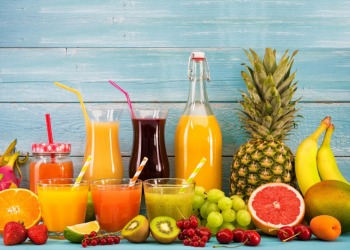Urban gardening is a great solution for those who have limited space in their apartments, but still like to have greenery around. Plants in your apartment not only look good, but they also improve the air quality in your place. Besides that, by growing your own food you can reduce your ecological footprint. Having your own urban garden helps to reduce the miles your food has travelled, it avoids associated packaging like containers or bags, and it may even reduce food waste. Pesticides and other chemical inputs can be much less in your own garden, compared to veggies from the supermarket. And, growing your own food can help save money. According to environmental leader Michael Pollan, one of the best and easiest things we can do as humans to reduce carbon emissions is to start a garden: it’s CO₂-free and dollar-free. What’s more to hesitate about? Let’s start gardening!
But First: Pick A Space
Start thinking about where in your apartment the plants would grow best. Remember, the closer to a window, the better the lighting situation. However, you can grow successfully anywhere with supplemental lighting.
The Veggies
-
- Chard/Kale/Arugula/Mustard: These leafy greens grow well indoors, as long as there is sufficient lightening; make sure you choose a spot that receives enough light (but keep the plant out of direct sunlight).
- Spinach: It is important to keep spinach from flowering, in order to harvest the leaves.
- Radishes and Turnips: Both are growing well in cool temperatures, full sun, and well-draining soil.
- Carrots and Parsley: Both plants originate from the same plant family, and are easy to grow and maintain indoors. As long as both plants have direct light and air movement.
- Onions and Garlic: Both onions and garlic have similar growth requirements to other root vegetables.
- Herbs: Herbs are the easiest plants to grow indoors. Herbs aren’t considered food, but they can be used as great seasonings for veggies. Think of oregano, rosemary, basil etcetera.
- Beans and Peas: An option is to grow both in containers. Tip: gently shaking the plants will stimulate pollination, and with the right growing conditions, both plants will produce for a while.
- Mushrooms: Mushrooms are a food source of vitamin D, so they’re a great option for your indoor vegetable garden. The mushrooms grow best in a cool, dark place.
- Cherry Tomatoes: Cherry tomatoes need a lot of sun exposure; the best spot for the plant would be next to a sunny window facing south. Turn the pot occasionally to expose the entire plant to sunlight.
Tips To Grow Your Plants Successfully
No matter which plant you’re deciding to grow, all plants need the same components.
Fertiliser: Use every now and then a fertiliser in order for your plants to grow properly, and receive all the provided nutrients.
Consistent lighting: Plants need a dark period each night to utilise the energy they create during the day, and this needs to be consistent. When day length changes, plants think the seasons are changing and they may stop growing, so timers are a good investment.
Air movement: Moving the air and creating a current of air to circulate air around your plants is highly beneficial for the growing process.

Editor’s Note: The opinions expressed here by Impakter.com contributors are their own, not those of Impakter.com. — Featured Photo: Plants in a pot . Source: Flickr.










